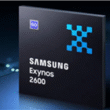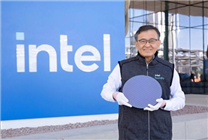Intel’s Panther Lake Processor: A Leap Forward with 18A Process Technology
Summary:
- Intel has launched the Panther Lake processor, marking the debut of its advanced 18A process technology.
- Microsoft is considering partnering with Intel to manufacture its Maia2 AI chips using the cutting-edge process.
- The potential collaboration could lead to future advancements in AI hardware and energy efficiency.
Intel has made significant headlines with the recent unveiling of the Panther Lake processor on October 18. This launch is notable not only for its hardware upgrades but also for introducing Intel’s highly anticipated 18A process technology. Early performance metrics suggest that the chip lives up to expectations, setting a promising course for Intel in the competitive landscape of semiconductor manufacturing.
The Significance of the 18A Process
Intel’s 18A process is particularly noteworthy as it represents the first advanced chip manufacturing process under 2nm production in the United States. Given the current landscape, where TSMC’s N2 technology is still awaiting actual product releases, this development positions Intel as a pioneer in the sub-2nm technology realm.
While TSMC has garnered interest from numerous customers for its N2 process, the critical challenge for Intel’s 18A technology lies in its limited customer base. Leading tech companies like Qualcomm, NVIDIA, and OpenAI have yet to integrate Intel solutions into their product lines. However, a potential partnership with Microsoft offers a glimmer of hope for Intel’s future.
Collaboration with Microsoft
Recent reports indicate that Microsoft is considering utilizing Intel’s 18A process for its upcoming Maia2 chips. This partnership stands out as a critical development, particularly since the Maia2 series is designed for AI applications in data centers. With Microsoft’s encouragement, Intel’s 18A and its enhanced version, the 18A-P process, could gain traction.
The 18A-P process promises improved energy efficiency and performance per watt, making it an attractive option for AI chip production. If the collaboration progresses smoothly, there is potential for Microsoft to transfer subsequent Maia series chips to Intel, further enriching their technological partnership and paving the way for future advanced processes like 18A-PT and 14A.
Current Specifications of the Maia Chip
Presently, the Maia chip is produced using TSMC’s 5nm process, which allows for a core area of up to 820mm². This chip efficiently operates within a power consumption range but can consume as much as 700W under peak conditions, demonstrating its robust processing capability. It integrates 64GB of HBM2E memory, delivers an impressive bandwidth of 1.8TB/s, and achieves a performance benchmark of up to 3PFLOPS at 6-bit precision.
The advancements with the Maia series not only underscore the demand for high-performing AI solutions but also highlight Intel’s evolving role in producing chips that meet these rigorous standards.
The Road Ahead
The potential union between Microsoft and Intel represents a critical shift in the semiconductor industry, particularly in the AI sector. Should this collaboration flourish, it may lead to widespread adoption of Intel’s advanced processes for not just the Maia series but also other future chip advancements.
Furthermore, Intel’s commitment to enhancing energy efficiency and performance in its chips aligns perfectly with the growing demand for sustainable and powerful AI solutions in various sectors. As this story unfolds, the technology community will keenly watch to see how these developments impact the competitive dynamics within the semiconductor industry.
In summary, Intel’s launch of the Panther Lake processor and its partnership with Microsoft on the Maia2 project reveal significant movements in the tech landscape. The emphasis on cutting-edge technologies, such as the 18A process, positions both companies favorably as they navigate the evolving demands of AI and data center applications. This collaboration could redefine industry standards, making it a pivotal moment in their respective paths.









